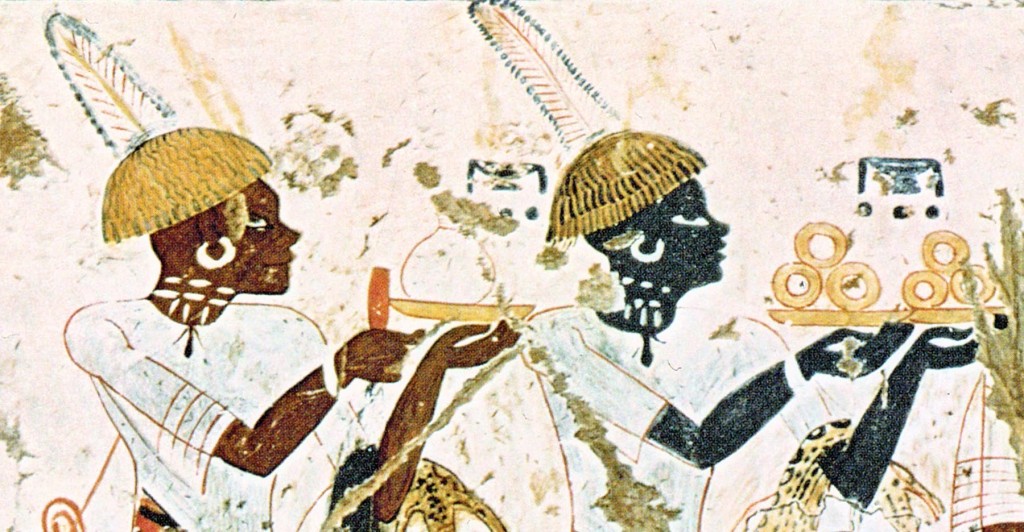Nubia is famous for its rich supply of gold and it is well known that Nubian gold was among the main Egyptian economic interests during a long time span (cf. Vercoutter 1959). During the London colloquium last week, the role of gold for the Egyptian presence in Nubia was discussed again.
There is increasing evidence that the location of the Egyptian New Kingdom sites in the Abri-Delgo-reach as rich gold ore region was important for their function (see Klemm & Klemm 2013, also Darnell 2013, 828). For example, recent work at Sesebi has stressed the importance of gold exploitation for the function of the site (Spence/Rose 2009; Spence et al. 2011). Evidence from Tombos (Stuart T. Smith) and Amara West (Neal Spencer) show a similar picture. Also Sai Island had direct access to gold ores and probably played a role in gold mining of the New Kingdom.
The German geologists Rosmarie and Dieter Klemm gave a very interesting paper in London – and more information can be found in their recent publication “Gold and Gold Mining in Ancient Egypt and Nubia.” According to the Klemms, gold mining expanded during the 18th dynasty to large scale in Nubia. They could trace a significant change in processing and prospecting methods, most importantly “the introduction of the grinding mill to the mining industry in the New Kingdom” (Klemm & Klemm 2013, 9) which allowed the increased exploitation of auriferous quartz vein systems. From their point of view, there is a connection between Ancient Egypt’s gold mining industry in the Abri-Delgo-reach and the New Kingdom temples of the region (Klemm & Klemm 2013, 568-570). And indeed – at all of the sites mentioned, mills and grinding stones suitable for producing quartz powder have been found.
Back in 1959, Vercoutter reconstructed the amount of gold coming from Kush in contrast to Wawat according to Egyptian texts (Vercoutter 1959, 135): there is a clear difference, especially during the reign of Thutmose III (also the starting date of the Royal building activity in the region) when much more gold of Wawat was registered. From the time of Amenhotep III onwards, Kush seems to have gained in importance as gold mining area – scenes like the famous representations in the tomb of Viceroy Huy illustrate that gold was an important item sent to Egypt at the end of the 18th Dynasty. Textual evidence implies a decline in gold production in Ramesside time – something we might be able to confirm or modify by future archaeological fieldwork!
References
Darnell 2013 = John C. Darnell, A Bureaucratic Challenge? Archaeology and Administration in a Desert Environment (Second Millennium B.C.E.), in J.C. Moreno García (ed.), The Administration of Egypt, HdO 104, Leiden 2013, 785-830.
Klemm & Klemm 2013 = Rosemarie Klemm, Dietrich Klemm, Gold and Gold Mining in Ancient Egypt and Nubia. Geoarchaeology of the Ancient Gold Mining Sites in the Egyptian and Sudanese Eastern Deserts, Natural Science in Archaeology, Heidelberg, New York, Dordrecht, London: Springer, 2013
Spence/Rose 2009 = Kate Spence, Pam Rose, Fieldwork at Sesebi, 2009, Sudan & Nubia 13, 2009, 38–46.
Spence et al. 2011 = Kate Spence et al., Sesebi 2011, Sudan & Nubia 15, 2011, 34–39.
Vercoutter 1959 = Jean Vercoutter, The Gold of Kush, Kush 7, 1959, 120-153.

